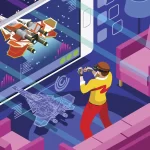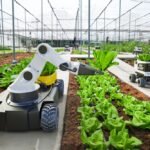AI and Personal Assistants: The evolution of virtual assistants and AI-powered personal aides.
In a world where technology continues to reshape our daily lives, virtual assistants have emerged as indispensable companions, streamlining tasks, and enhancing productivity. Powered by Artificial Intelligence (AI), these intelligent personal aides have come a long way since their inception. From simple command-based systems to advanced AI-driven conversational agents, virtual assistants have evolved into sophisticated tools that understand context, adapt to user preferences, and anticipate needs. In this blog, we unravel the fascinating evolution of AI-powered personal assistants and their transformative impact on our lives.
- The Early Years of Virtual Assistants
The concept of virtual assistants dates back to the 1960s with the invention of ELIZA, an early natural language processing (NLP) program. While limited in functionality, ELIZA sparked interest in creating conversational AI. Subsequent decades saw the development of basic virtual assistants like Microsoft’s Clippy and Apple’s Siri, which laid the foundation for the AI-powered assistants we know today.
- The Rise of AI and Natural Language Processing
The introduction of AI and machine learning brought significant improvements to virtual assistants. With advancements in natural language processing, AI-powered aides became more adept at understanding human speech and responding contextually. This marked a turning point, allowing users to interact with virtual assistants more naturally, leading to widespread adoption and integration into various devices and platforms.
- Personalization and Contextual Understanding
AI-powered personal assistants have evolved beyond mere voice recognition to understand context and anticipate user needs. By analyzing user behavior, preferences, and historical interactions, these assistants can offer personalized recommendations, provide timely information, and assist with tasks proactively. Personalization has made virtual assistants more integral to users’ daily routines, adapting to their lifestyles and becoming indispensable tools.
- Expanding Ecosystems and Integration
AI-powered personal assistants have expanded their ecosystems, integrating with smart home devices, wearable technology, and various applications. They can control lights, thermostats, entertainment systems, and even order groceries with a simple voice command. This seamless integration makes virtual assistants central hubs for managing smart homes and digital lifestyles.
- Conversational AI and Natural Language Understanding
Advancements in natural language understanding have led to the development of more conversational AI. Virtual assistants like Amazon’s Alexa, Google Assistant, and Apple’s Siri can engage in dynamic dialogues, understand complex requests, and provide more human-like responses. This has made interactions with virtual assistants feel more natural and engaging.
- Voice Commerce and E-Commerce Integration
Virtual assistants have become a driving force in voice commerce. Users can make purchases, check product availability, and track deliveries using their virtual assistants. E-commerce platforms have integrated AI-powered personal assistants to offer a seamless shopping experience, further blurring the lines between virtual and real-world interactions.
- On-device AI and Privacy Concerns
The evolution of virtual assistants has also brought attention to privacy and data security. On-device AI processing is becoming more prevalent, reducing the need to send sensitive data to remote servers. This shift addresses privacy concerns and ensures that personal information remains secure on the user’s device.


































